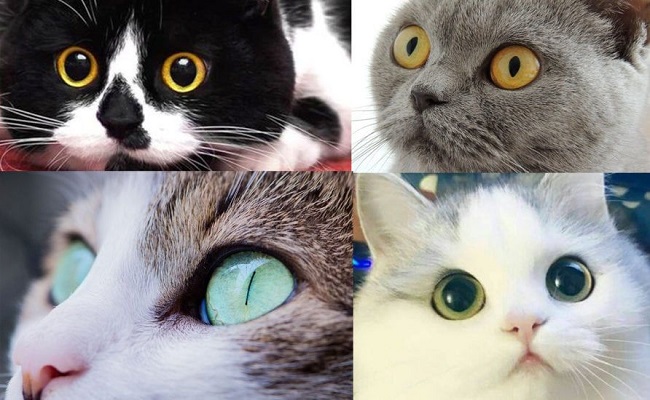Cats’ eyes are known for their captivating beauty and unique charm. One curious aspect of feline eyes is the potential for color changes. While most people associate cats with specific eye colors, such as green, yellow, or blue, it is not uncommon for a cat’s eyes to undergo subtle or even dramatic changes in color.
In this comprehensive guide, we will explore the phenomenon of cats’ eyes changing color, including the reasons behind it and the factors that influence these changes.

Understanding Cats’ Eye Colors
Before delving into color changes, it’s important to understand the basic eye colors seen in cats:
Read Also:
Blue Eyes: Common in certain breeds, such as Siamese or Ragdoll cats, blue eyes are typically associated with kittens. However, some cats retain blue eyes throughout their lives.
Green Eyes: Green eyes are one of the most common eye colors in cats. They can range from vibrant emerald to a softer yellow-green shade.
Yellow Eyes: Yellow eyes are often associated with cats, particularly those with tabby or tortoiseshell coat patterns. The intensity of yellow can vary.
Amber Eyes: Amber eyes are a variation of yellow, often appearing as a rich, golden hue.
Heterochromia: In some cases, cats may have different-colored eyes, a condition known as heterochromia. One eye may be blue while the other is green, yellow, or a combination of colors.
Reasons for Cats’ Eye Color Changes
Here are some reasons why cat’s eyes change colours:
Age
Cats’ eye color can change as they mature. Kittens are typically born with blue eyes, but as they grow, melanin pigmentation can develop, resulting in a shift to green, yellow, or amber tones. The complete transition usually occurs by the time the kitten reaches three to four months of age.
Health Factors
In some cases, changes in a cat’s eye color can be attributed to health issues. Certain diseases or eye conditions, such as glaucoma or uveitis, can cause the iris to appear a different color or develop a hazy or cloudy appearance.
If you notice sudden or significant changes in your cat’s eye color, it’s essential to consult a veterinarian for a thorough examination.
Breed Characteristics
Certain cat breeds are more prone to eye color changes due to specific genetic traits. For instance, Siberian cats are known for their ability to have eyes that change from yellow to green as they age.
Additionally, breeds like Turkish Van and Turkish Angora may exhibit heterochromia, with one eye being blue and the other green or amber.
Lighting and Reflection
The environment and lighting conditions can also play a role in how a cat’s eye color appears. Light reflecting off the surroundings can influence the perceived color of the iris.
This is particularly noticeable in cats with reflective tapetum lucidum, a structure that enhances their night vision.
Read Also:
Conclusion
The mesmerizing beauty of cats’ eyes extends beyond their captivating colors. The ability for a cat’s eyes to change color adds an element of intrigue and mystique to these enigmatic creatures.
From age-related transitions to genetic influences and even health factors, several reasons can contribute to these color changes.
If you have concerns about your cat’s eye color or notice any sudden or drastic changes, consulting with a veterinarian is always recommended.
Embrace the magic of your feline companion’s ever-changing eyes and appreciate the unique allure they bring to your shared bond.
























